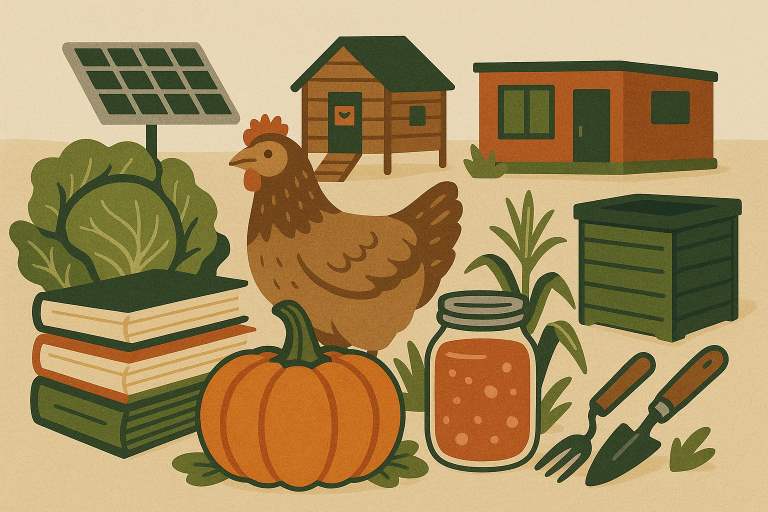Planning Your Market Garden Seed Starting Schedule Bass-Ackwards - From Harvest To Start
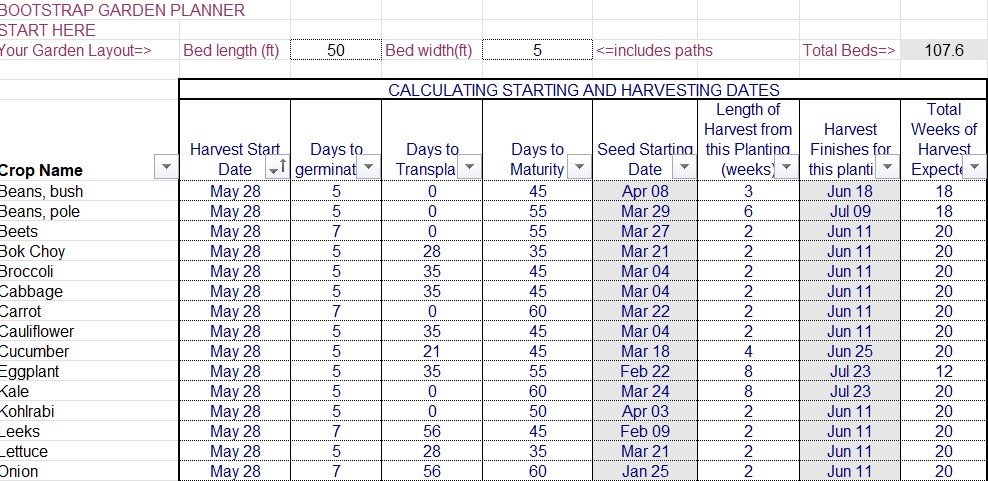 I use a spreadsheet to build my market garden seed starting schedule
I use a spreadsheet to build my market garden seed starting scheduleOne of the key tasks in planning a market garden is building a seed starting schedule for a wide range of crops. Since you (hopefully) want as long and productive a season as possible, there are some key dates and data to consider:
- Your last spring frost-free date;
- Your first fall frost date;
- When you want your first harvest to start;
- How many days for your seeds to germinate and grow to maturity
- When can seeds be safely planted or transplanted outdoors in your area
In this article, I’ll explain each of these and work through the process of planning bass-ackwards from harvest to seed starting, to help you to maximize the success of your market garden.
Your Frost Dates
Carefully Curated Resources For The Homesteader and Prudent Property Owner
The world seems to be a little unsettled these days. I'm always looking for ways to make New Terra Farm more self-sufficient and productive.
Here's a few of the best ways I've found to make self-sufficiency happen. Useful Homesteader Resources
The period between your last spring frost-free date, and your first fall frost date are your growing season (all you lucky people in Hawaiʻi can skip this part). Your planting dates should be planned in reference to these two dates.
They are largely beyond your control, but you can cheat a little – see the section on season extension below.
My two key dates at New Terra farm are May 13 and September 26, giving me about a 135-day growing season – you can see why building a hoop house was one of my top priorities when we started market gardening!
Here’s a
link to find your key frost dates.
Establish Your Harvest Start Date
The next step in planning your seed starting schedule is to determine when you would like to harvest your crops. This is driven by your market, the specific variety of vegetable you are planting, and your customer preferences.
You might want to be ready for the first day of your farmer’s market, or your planned first delivery for your CSA. This date is partly within your control; you still need to consider what crops you CAN grow to meet that desired starting date.
For example, let’s say I want to harvest a variety of vegetables on June 7, my first planned CSA delivery day.
Here’s how I figure out the crops I can reasonably expect to have ready for harvest by that date.
Check the Seed Packet or Catalog
Once you have identified your desired harvest date, refer to the seed packet or seed catalog for the specific vegetable you wish to grow.
You will find information on the estimated number of days to maturity. For example, if the packet states that a particular broccoli variety takes 45 days to mature, you can use this as a guideline for determining your seed starting date.
Make note if ‘days to maturity’ is from seed or from transplant.
Account
for Transplanting and Germination Time
In addition to the days to maturity, your need to consider the time required for germination and transplanting. Most seed packets or catalogs provide instructions on the average germination time, and the recommended age at which seedlings can be safely transplanted.
In the case of broccoli and most other brassicas, germination is usually 5-7 days; and, I like a 4-5 week old transplant for these crops.
I also need to know how many weeks before or after my frost-free date I can safely plant seeds or set transplants out. The catalog will tell you broccoli can be planted out 2 weeks before your last spring frost.
Putting all this information will help you determine when to start your seeds indoors to have a mature plant ready by your harvest.
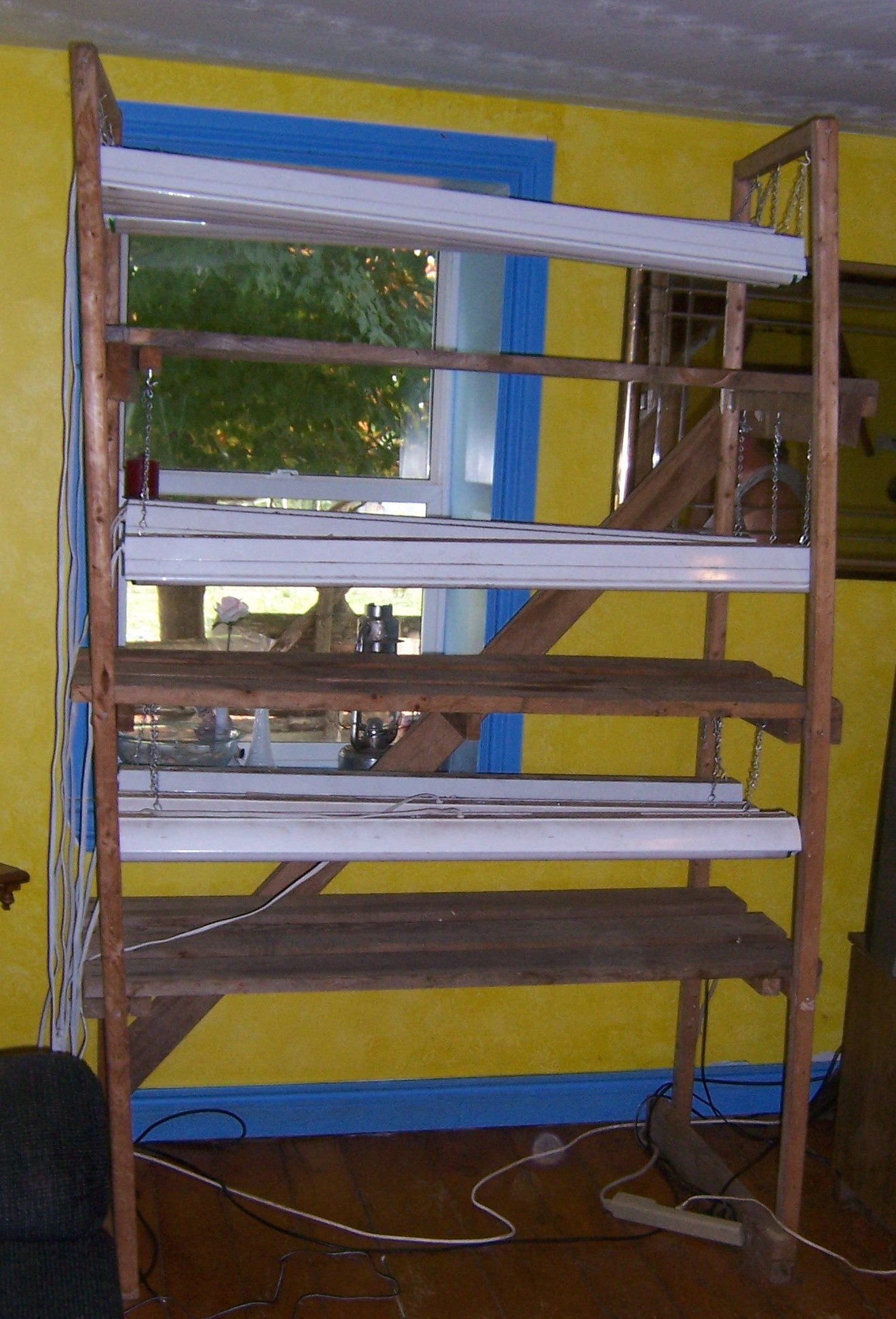 My first indoor seed starting set-up
My first indoor seed starting set-upCheating Mother Nature – Season Extension
If I cover my transplants with floating row cover I can usually push that safe planting date back by about 2 weeks.
For example, for our old friend broccoli, my plant out date (unprotected) would be May 13 minus 2 weeks = April 30.
I have consistently been able to put broccoli transplants in the ground by April 15, when protected by row cover.
My unheated hoop house adds another layer or protection. I use it for the earliest crops of carrots, beets, turnips lettuces, bunching onions, radishes and (of course) broccoli.
I protect the plants in the greenhouse under an extra layer of row cover. This lets me reliably put these crops in the ground in late March, and harvest in early June.
Put Your Seed Starting Schedule Together
Once you have gathered all the necessary information, it's time to create a seed starting schedule. Begin by counting back the number of days to maturity, then account for the germination and transplanting time.
Planned harvest date June 7:
- minus 45 days to maturity;
- minus 5 weeks for transplant;
- minus 7 days germination;
= March 12 first seed starting date for broccoli.
Mark this date on your
calendar as the seed starting date.
Succession Planting
That's the first planting taken care of. What about the rest of your season? I tell my CSA customers that I aim for 20 weeks of delivery, from early June to to mid-late October.
I use a 'replant interval' to determine my next seed starting dates. For example, I will start broccoli seeds every two weeks until I have filled my 'planting window'.
I work bass-ackwards again from my last planned delivery to figure out my last seed start date for the season.To return to broccoli one more time:
October 25 harvest date
- minus 45 days to maturity
- minus 5 weeks for transplant
- minus 7 days germination
= July 30 last seed starting date for broccoli.
Accounting for Your Climate
If you do the math in the above example, you would think I plant broccoli 10 times throughout the season: July 30 minus March 12 = 20 weeks/2 week planting interval= 10 plantings.
I actually do about 6 plantings, 3 in the spring and 3 beginning in mid-late summer, to avoid the hottest part of summer here. I can usually cut enough side shoots from harvested heads to carry on deliveries through the summer.
Free Market Garden Start-Up Guide
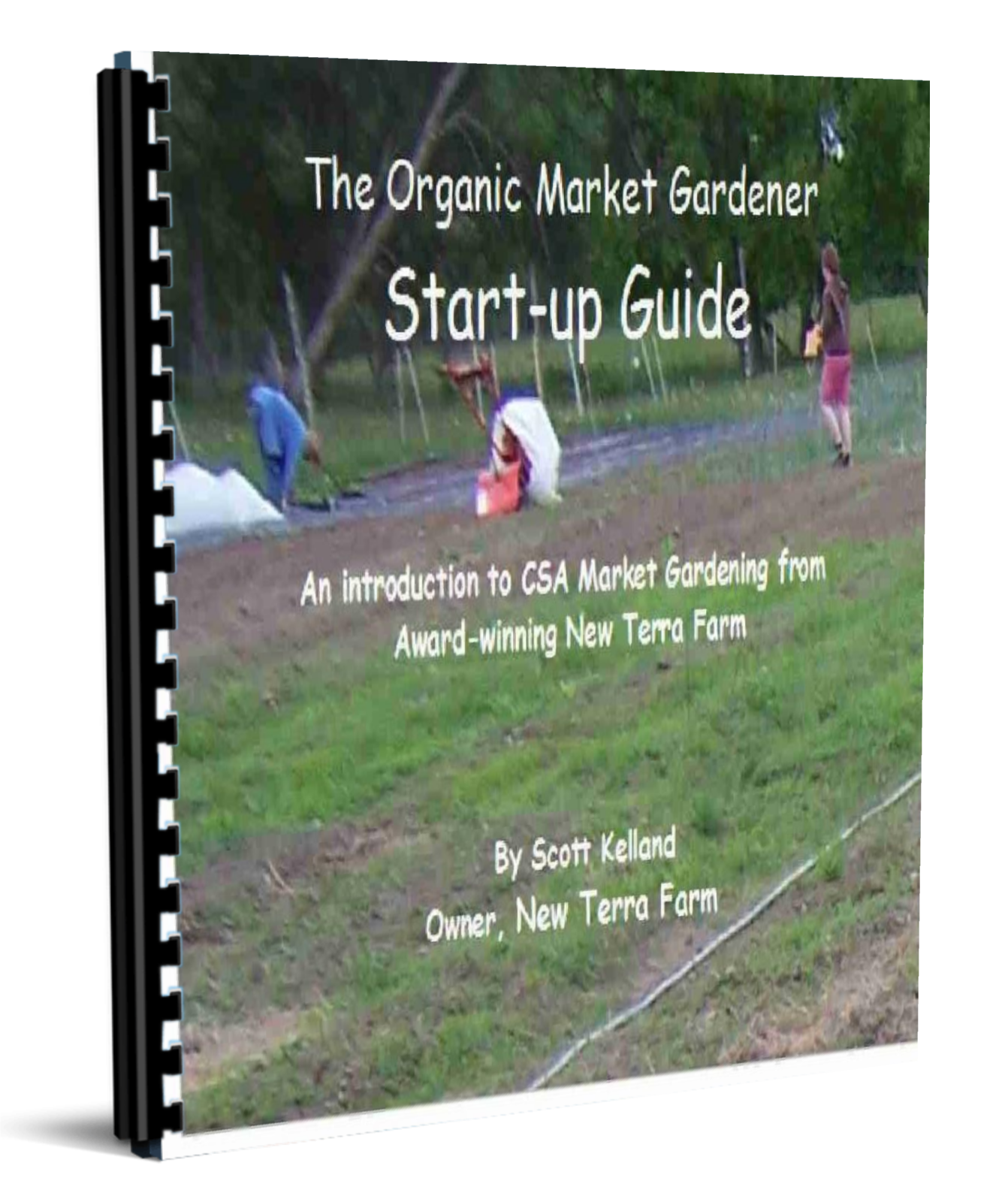
The consumer demand for fresh local organic food has never been higher. Bad news on the supply chain is good news for local growers.
Get my free Organic Market Gardener Start-up Guide and see if this is the right time to launch your CSA market garden business.
Special Note About Greenhouse Growing
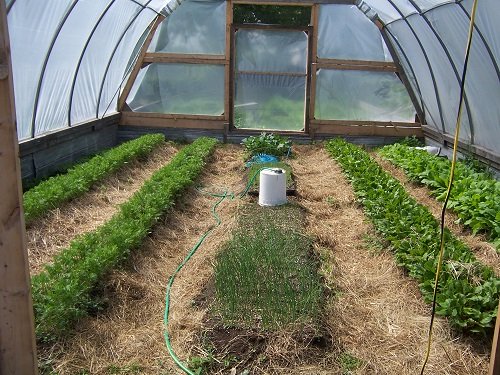 My biggest hoop house fully planted
My biggest hoop house fully plantedI plan my hoop house growing on it's own schedule, because it fills a particular niche. The plants in the greenhouse are specifically grown for my first couple of CSA deliveries, and for the first days of my farmer's market.
I usually have the first beets, carrots, and turnips at my market, and get a premium price.
Depending on your market, you might want to do the same. If you NEED a hoop house, check this out.
Informate Your Seed Starting Schedule
As you might imagine, building a schedule to grow 30 or 40 cultivars to ensure harvest and delivery to my customers over a 20-week season is a big job.
The top graphic on this page is the spreadsheet I built to make this process a little easier. I use this every year when planning the garden.
With the guidance in this article you can build your own version, or get a copy of mine in my Bootstrap Market Gardening Book. There are other software tools included, as well as a step-by=step guide to launching your own successful CSA market garden, in 60 days or less.
Or get Bootstrap Market Gardening, plus plans to build your own hoop house (and a bunch more good stuff) in my Complete Starting Farming Pack. The new season will be getting under way soon, it's a good time to plan
- Home
- Market Gardening
- Seed Starting Schedule
Got questions to ask, stories to tell?
Share your organic market gardening question, or comment, or story.
